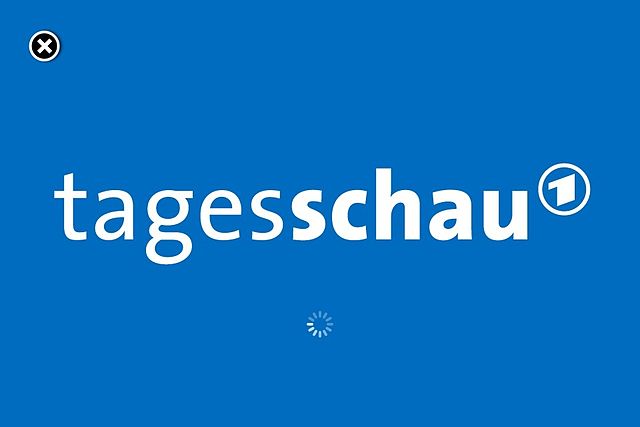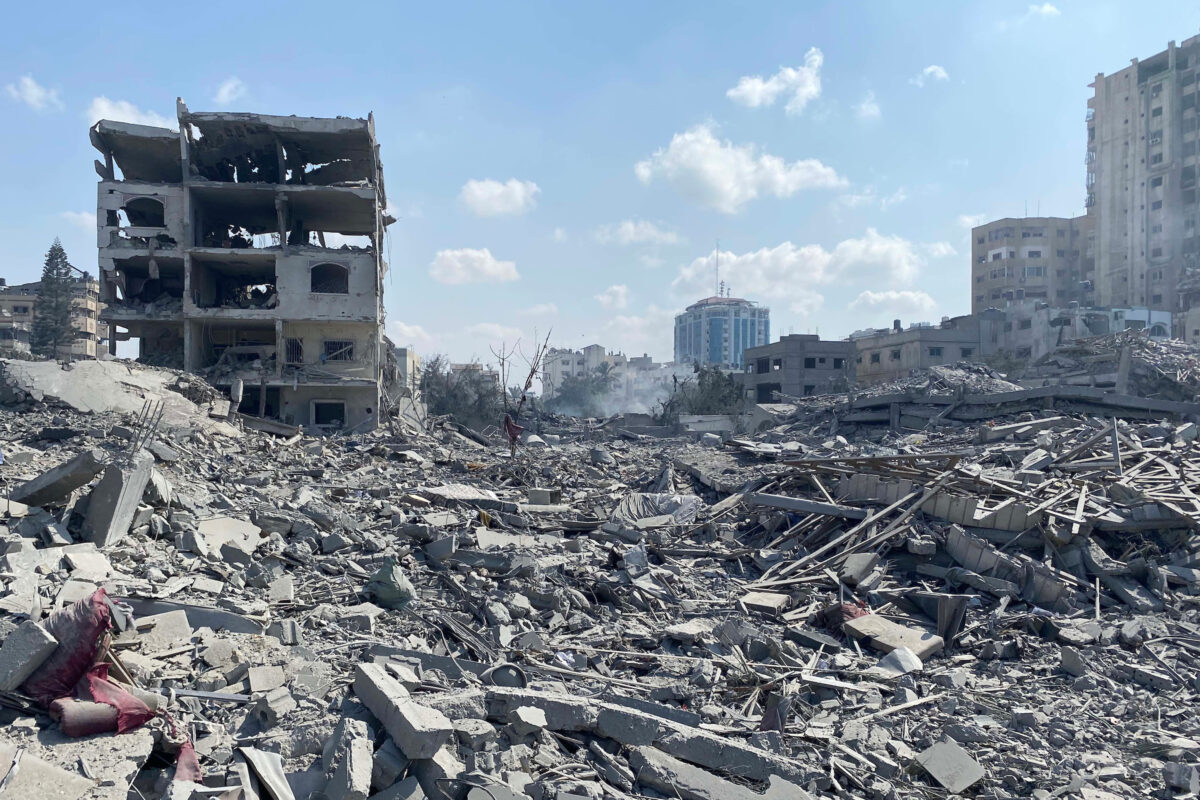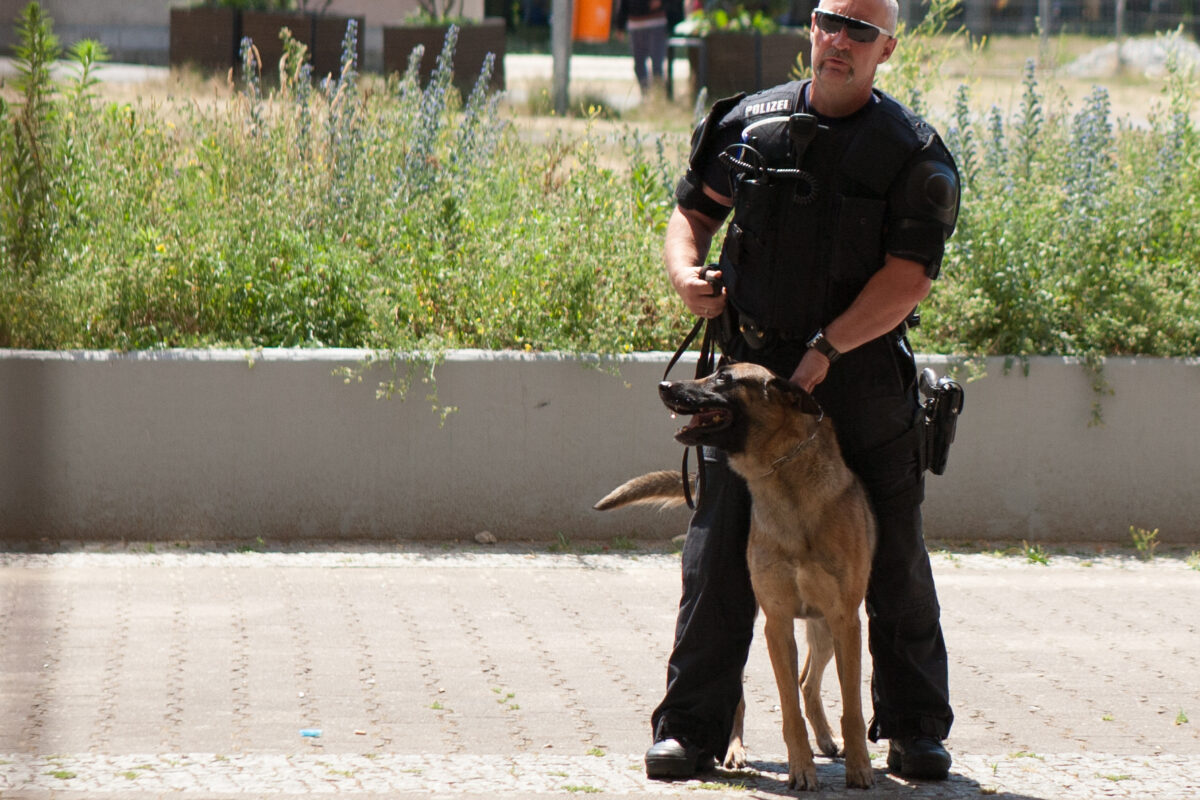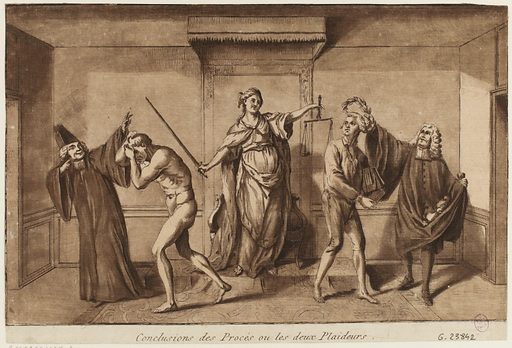‘Freedom of the press and of reporting through radio and film broadcast are guaranteed. Censorship does not take place,’ asserts Article five of the German constitution. Supposedly this encodes journalistic freedom into the fabric of the Republic. Yet, as politicians’ assertions of solidarity with Israel, German reporting on violence in Gaza, is either pro-Israel, or is timid and incomplete. Vice Chancellor Robert Habeck said in a much-praised speech on November 2nd, ‘The security of Israel is German reason-of-state (Staatsräson)’. Through omission, hesitation and manipulation approaching propaganda, some channels reflected his words clearly. But others seemed hindered by them and try to convey that there is more to the story without betraying where their sympathies lie.
Tagesspiegel is headquartered in Berlin. The outlet provides news both digitally and in print. Die Zeitungen, which monitors newspaper activity in Germany, ranks Tagesspiegel as the highest-quality regional paper in the country as reviewed by experts. However reporting on the Israel-Hamas conflict tends to concentrate on antisemitism, the Israeli hostages, local terrorism threats, and Israeli military activity.
The 167,000-follower @tagesspiegel Instagram account underwent an apparent tone shift around mid-December, when content became more weighted in favour of Palestinian voices in Berlin and abroad. Posts included headlines like ‘Four in ten of those killed are children’; ‘The humanitarian catastrophe in Gaza is beyond all imagination’ overlaid on images of young boys among rubble; ‘Protests against Hamas in Gaza following the death of a teenager’; and a post highlighting the conflation of grief with ‘terrorism’ within Germany. These and others, appear to humanise Palestinian victims of the conflict and reflect support of their struggle.
The social media presence contrasts with headlines on the Tagesspiegel homepage. While the reporting illustrated in the above posts is also published on the site, it is interspersed among opinions such as the justification of Israeli attacks on non-military targets due to Hamas’ ‘Fusion with civilians’ and an article quoting Munich cardinal Reinhard Marx in a headline suggesting Islam a whole be ‘stopped’.
A possible explanation for Tagesspiegel’s contradictory social media and homepage presence could be related to the age of readers in differing media. More than half of Instagram users in Germany are under 30, and TikTok has a particularly young user base. Those older than 30 use the Holocaust to base their views on the conflict or have oriented their opinions around violence during early 2000s which culminated in Israeli settlers’ withdrawal from the Gaza Strip. In contrast many of those under 30 likely encounter the conflict for the first time in the aftermath of October 7th. Crucially, civilian narratives out of Gaza now circulate on social media platforms such as Instagram and Tiktok and shape public opinion. “Curated” coverage allows the paper to drive positive engagement via @tagesspiegel while providing enough pro-Israel content on tagesspiegel.de to maintain the status quo. Thus they evade accusations of so-called ‘Anti-Israel antisemitism’.
Beyond local news, the nation’s most-viewed, most-trusted source Tagesschau (ARD) included consistent nightly reports for several weeks on the Hamas-Israel conflict in its 8pm segment. The 15-minute broadcast attracts nearly 10 million viewers on an average night—a 34.5% share of the market. Notably, this cultural institution beloved by the German public was confronted with a decisive event several weeks ago when ARD’s own reporters in Israel were held and threatened by Israeli soldiers.
An article on their website called the event ‘a clear attack on freedom of press’, and a corresponding instagram post received more than 250,000 likes and over 7,000 comments. Five days later, an interview was published on the Tagesschau website under the heading Journalists Are Obligated to Document Crimes. In the article, one of the affected journalists, Jan-Kristoph Kitzler, addressed Israeli campaigning to discredit foreign journalism.
In the weeks following Kitzler’s ordeal, Tagesschau 20 Uhr featured a series urging the public to critically engage with media surrounding the conflict. It illuminated reporters’ unique challenges in the area. For example, a story documenting journalist Mohammed Abusaif’s efforts to flee Gaza. Abusaif claimed that civilians keep a wide berth of journalists, as they are thought to be favoured targets by the Israeli military. The broadcast on the November 29th slot dedicated several minutes to address wartime media literacy. Moderator Judith Rackers said that images obtained during conflict are often supplied by the involved parties, ‘difficult to verify, and often false’. Her words reflected a press release from the Deutsche Journalisten-Verband (German Journalists’ Association or DJV). A clip of celebration during a hostage exchange authored by Hamas follows, after which an interviewed ARD fact-checker affirms that opponents in war ‘naturally want to show their side of the story’.
As the broadcast cuts to the next clip, a voiceover claims that the same is true of Israel—that ‘selected’ journalists are accompanied by Israeli military personnel to document the war’s progression. The example in the clip, was originally from an American news agency. It traced the Al-Shaifa Hospital story. Israel justified bombing the hospital with claims that Hamas commando headquarters were concealed in tunnels beneath its foundation. The voiceover says that the military ‘wants to show evidence of a commando headquarters—journalists are shown tunnels and guns’. Following the footage, media scholar Steffen Siegel explains that the ‘great seductiveness’ of images is in their immediacy and the spontaneity with which the public reacts to them.
Dedicating several minutes of a 15-minute programme to educating the public on media literacy following an ‘attack on journalistic freedom’ victimising colleagues, further coupled with the CBS Morning banner on footage of Al-Shaifa Hospital begs a question. Namely, is the nation’s most popular news source grappling with the line between the German state’s pro-Israel sensibilities and responsible reporting? Tagesschau coverage has reasonably sown distrust toward information transmitted via the IDF and of Israel’s motivations among viewers. However it remains a far cry from, for example, CNN reporting that openly questions the verity of IDF claims that a Hamas commando central was located beneath the Hospital.
While honest reporting on Gaza is in the interest of the German public and therefore the duty of public broadcasters, a wariness surrounding stories negatively reflecting on Israel leaves Tagesschau with few tools to represent the truth. Foregoing what should be abundant ground coverage for a media literacy lesson during their most precious time slot betrays ARD’s ambivalence. But, as with CBS footage of Al-Shaifa, the German media again looked to the USA following The New York Times’ report stating that Israel had received repeated prior warning of Hamas’ plans for attack.
Source attribution is crucial to news media because the credibility of information depends on it. It also allows journalists to present information that they otherwise are not qualified to, separating the presentation from the realm of subjectivity and personal opinion. Their own convictions are muted and they are perceived as a neutral vessel for factual information. On December first, ARD newscaster Susanne Daubner introduced the NYT report with a question: ‘Did Hamas’ attack on Israel really come as a surprise?’ Because responsibility for the information lies elsewhere, her provocative intonation and the following discussion with Tel Aviv correspondent Christian Limpert received a degree of protection from accusations of anti-Israel bias.
Hiding behind Uncle Sam, appealing to viewers to cautiously consume the data they encounter—alludes to an unseen force restricting ARD’s coverage. With freedom of the press and from censorship enshrined in the constitution, what is the invisible rope tying the hands of German news coverage? According to some scholars, it’s the same Staatsräson Robert Habeck mentioned in his speech.
A document published by the Bundestag late 2023 elaborates on German Staatsräson as an obligation to protect Jewish lives and to the security of Israel, assumed within the text to be interchangeable. It provides Staatsräson as justification for Germany’s vote against recognising Palestine as a UN-non-member observer state in 2012. The obligation to Israel’s security is categorised as an obligation to ‘facilitate a political environment which reduces tensions between Israel and neighbouring Arab countries.’ Closer analysis of Palestinian sovereignty as a threat to Israel is not presented in the document.
Deutschlandfunk, traditionally broadcasts through radio and other audio media but also summarises current events on its website. It has taken an interest in politicians deviating from the accepted pro-Israel doctrine. Opinions which include criticising Israel for having ‘no plan’ for its fight against Hamas; or United Nations General Secretary Antonio Guterres’ opposition to Israel’s actions and warnings against escalation. Early reporting lent significant attention to Israeli and international casualty numbers alongside the Palestinian civilian death toll; an IDF blunder resulting in the death of 13 hostages; collapse of the healthcare system in Gaza; collective punishment per the UNO; protest bans, as well as efforts against domestic antisemitism. Arguably Israel-sympathetic content appears to have dwindled with the war’s progression.
The outlet tackles Staatsräson’s impact on the German media in an episode of their Breitband podcast. An expert guest interviewed on the podcast, was Meron Mendel, the Anne Frank Education Centre director, professor and historian. Mendel argues that while global news had the same point of origin on October 7th—the shock of Hamas’ attack—coverage in the US and much of the world has since developed in a direction unlikely to be followed by German coverage.
Mendel assessed the initial coverage worldwide portraying Israel as ‘victim’ and Hamas as the ‘perpetrator’, as an image that proved increasingly difficult to maintain. As Israel’s counter-offensive progressed, mounting civilian costs became incompatible with the idea that Israel was acting in self-defence. Turning to American media, he cites the Washington Post’s front-page dedication to images of Gazan child casualties, claiming that ‘such a strong gesture of empathy with Gazan civilians would be interpreted as anti-Israel’ in Germnay. Arguing the German media presents as much more reserved than its American counterpart.
Staatsräson is defined in the episode as either ‘the interests of the state bear importance above all others’ or is ‘a critical, unshakeable principle of the state’. On the latter definition, the German state holds Israel’s right to existence as inviolable and that ‘the security of Israel is the security of Germany’. Note that legal scholar Martin Morlok calls this use of the word a ‘terminological misnomer’. Staatsräson provides a foundation for a nation’s geopolitical handlings. The moderators posed the question, ‘does Staatsräson apply only to the state of Germany, or also to the German media?’
Mendel answered, ‘[the idea that a] government tell its people what to think is anti-democratic’; further, the term has no legal underpinning and is propagated by politicians without an understanding of its meaning or regard for the broader consequences of doing so.
These ‘broader consequences’ are evidenced in Axel-Springer Verlag. The owner of BILD, Welt, Politico, and several daily papers including Berliner Morgenpost among other outlets, declared itself ‘unrestrictedly on Israel’s side’ and amended company policy It now demanded explicit support of ‘the state of Israel’s right to exist’, of employees. The move was praised by former Bundestag Member Jürgen Trittin (Die Grünen). In an interview with weekly newspaper Die Zeit Trittin said that so much should be expected of ‘every publishing house and every political party.’ His words prompted a statement from the DJV rejecting politicians’ attempts to intervene in ‘responsible reporting’. Even if no such demands have been made outside of the Axel-Springer family, the shadow cast by so-called Staatsräson on Germany’s most influential sources is inescapable, driving them to reserved and duplicitous coverage of Gaza.
Mendel acknowledges that the German media must be aware of the resonance that reporting could have with an antisemitic German public. Antisemitism had a clear foothold in German society prior to October 7th. The 2022 Leipzig Authoritarianism Study of more than 2.5 thousand participants found that more than a quarter at least partially agreed with the statement, ‘Even today Jewish influence is too strong’, while 23% said that Jewish people are fundamentally different and don’t ‘fit’ with German society, and a similar number saiod that Jewish people use ‘more tricks than others’ to ‘get what they want’. Audiences could therefore be primed to twist information into fuel for preexisting antisemitic beliefs.
Material presented by Tagesschau, concern from the DJV and the content of the Breitband episode overlap in their message that the conflict requires extra care and meticulousness. Mendel’s proposed solution is to simply dedicate more time and pages to reporting on the conflict to avoid reanimating Germany’s fraught anti-Jewish history while also truthfully documenting atrocities in Gaza. In his own words: ‘German antisemitism is no reason not to broadcast civilian suffering—this obligation is essential to all reporting’.




